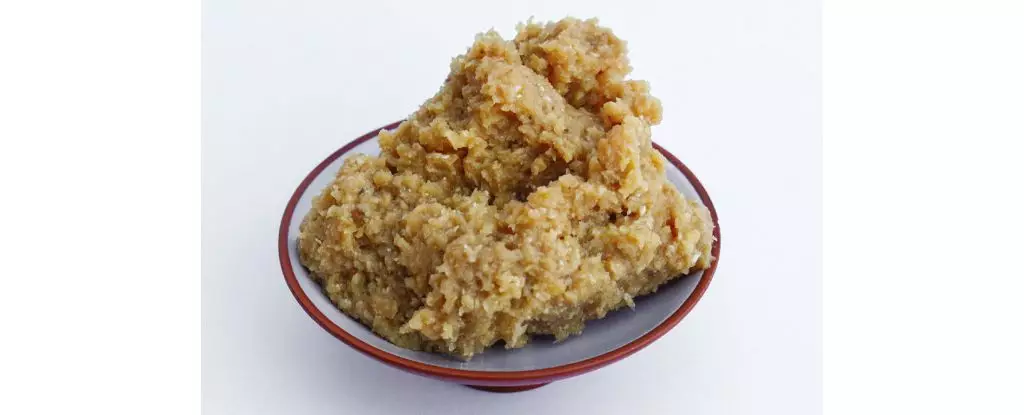Miso, the rich and savory soybean paste, has established itself as a staple in Japanese cuisine and beyond. The fermentation process that transforms simple ingredients—steamed soybeans, salt, grains, and the powerful fungus Aspergillus oryzae—into this umami-laden delight is a testament to the art and science of food. But what happens when we take this traditional ferment, normally confined to Earth, and catapult it into the stark and sterile environment of space? Scientists have embarked on a bold experiment to find out, and the results are nothing short of fascinating.
The Space Experiment: A Journey of Flavor
In a groundbreaking study, researchers prepared three distinct batches of miso starter, deploying one to the International Space Station (ISS), while the others were left on Earth—in Cambridge, Massachusetts, and Copenhagen, Denmark. The chosen methodology was intentional: by utilizing identical fermentation conditions where possible and a control batch that was subjected to open environmental factors in Copenhagen, the scientists aimed to isolate the effects of microgravity and space radiation on fermentation outcomes.
The fermentation aboard the ISS lasted for a full 30 days, closely monitored in a specially designed box that tracked variables such as temperature, humidity, pressure, light, and radiation levels. Interestingly, this conditions-induced diversity showed a clear impact on the resulting microbial ecosystems thriving within the miso pastes. Much like how different climates influence wine or cheese production, the ISS environment sculpted a miso profile wholly distinct from its terrestrial counterparts.
The Unexpected Flavor Profile of Space Miso
Upon completing the fermentation, the flavor and aroma profiles of the miso were meticulously assessed. While all samples shared some flavor components expected from traditional miso, the space variant emerged with tantalizing notes of nuttiness and a roasted quality that was markedly different from the Earth-brewed batches. This unexpected twist can be attributed to a combination of factors. Elevated temperatures on the ISS, perhaps more than on Earth, catalyzed specific reactions resulting in the production of pyrazines—organic compounds typically associated with roasted and nutty flavors.
This striking variation reveals an unknown universe of culinary possibilities existing on other planets, suggesting that as we explore further into the cosmos, our culinary adventures need not be subdued. The adaptations of life in space, including in our flavor experiences, open up exciting channels for enhancing astronaut meals, especially critical for emotional and physical well-being on prolonged missions.
Microbial Diversity: A Key Player
The insights from this experiment extend beyond flavor. The analysis indicated that the microbial composition of the space miso was noticeably altered. With higher levels of Staphylococcus epidermidis and Staphylococcus warneri present, researchers theorize that the unique conditions aboard the ISS, such as higher temperatures, shaped these microbial communities. Notably, Bacillus velezensis was solely identified in the space sample, hinting at the potential for diverse microbial interactions and behaviors in space that challenge our notions of life beyond Earth.
This discovery provokes thought regarding how microbial life can adapt and flourish in environments drastically different from their natural habitats. The implications of these findings stretch into bioethics as well; if we are capable of altering life forms through exposure to new environments, what responsibilities lie with us regarding potential contamination and interaction with extraterrestrial ecosystems?
A Broader Impact on Space Exploration
Integral to the ongoing quest for deep-space exploration and colonization, understanding the implications of food production in space becomes paramount. As NASA and other agencies contemplate long-duration missions to Mars and distant celestial bodies, ensuring that astronauts maintain a healthy and rewarding diet is crucial. Research like this not only elevates the excitement around culinary science in microgravity but also emphasizes the need for a holistic approach considering nutrition, culture, and psychological well-being.
To bridge the gap between biology, food science, and the inherent cultural aspects of what we consume, as noted by researcher Joshua Evans, is not just an academic endeavor but a vital exploration of what it means to live sustainably in space.
In essence, the study of space miso transcends the ordinary, reminding us that even in the cold vacuum of outer space, life—and its flavors—can take on new and astonishing forms.


Leave a Reply